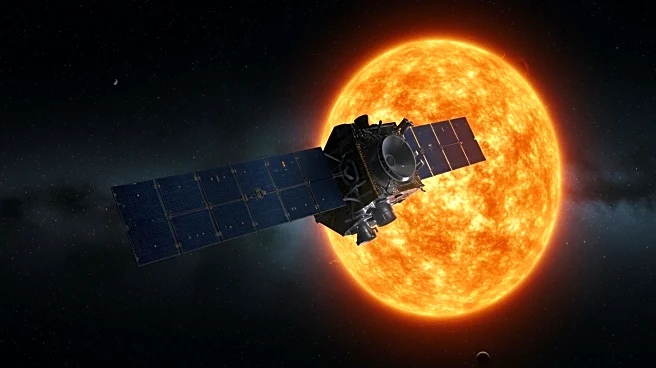What is the story about?
What's Happening?
NASA's PUNCH mission, consisting of four spacecraft, has successfully reached its final science orbits as of August 7. Launched on March 11, these spacecraft are positioned along Earth's day-night boundary, providing an unobstructed view of the Sun and its corona. The mission aims to study the solar wind, the constant outflow of material from the Sun's outer atmosphere. PUNCH's principal investigator, Craig DeForest, emphasized the need for a global measurement of the solar wind, which requires the spacecraft to be spread around the planet. The mission combines data from its Narrow Field Imager and Wide Field Imagers to create a wide-field mosaic, tracking space weather events from the Sun to Earth. This data complements observations from other heliophysics missions, offering a comprehensive view of the solar corona and wind.
Why It's Important?
The PUNCH mission is crucial for understanding the solar wind and its impact on space weather, which can affect satellite operations and communications on Earth. By providing a global perspective, PUNCH enhances the ability to predict and mitigate space weather events. The mission's data is publicly available, allowing researchers to study the solar corona and wind in detail. This contributes to the broader scientific understanding of the Sun-Earth connection and supports the development of technologies to protect space assets and infrastructure.
What's Next?
The PUNCH mission will continue to provide valuable data on the solar wind and corona, contributing to ongoing research in heliophysics. The mission's data will be integrated with observations from other missions to improve space weather forecasting. Researchers will analyze the Level 2 data, which offers nearly fully processed images, to gain insights into solar phenomena. The mission's success may lead to further advancements in space weather prediction and the development of new technologies to safeguard space operations.
AI Generated Content
Do you find this article useful?












